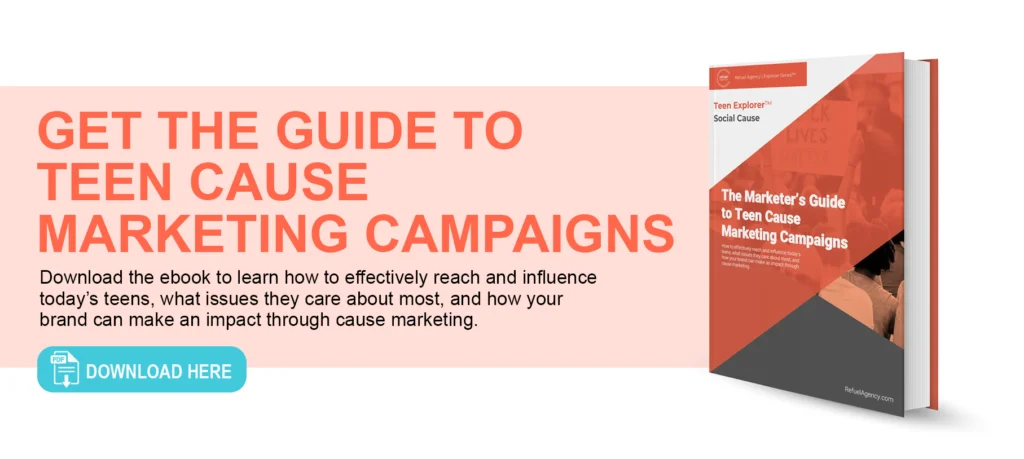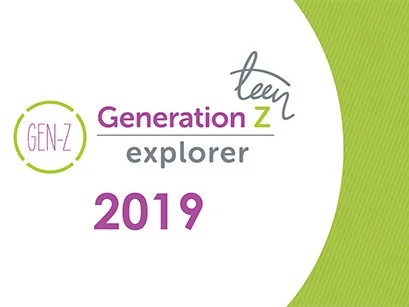As a young and ever-shifting consumer segment, high school students present a moving target for marketers. Just when marketers seem to understand how to reach this young demographic, their preferences change again, requiring an all-new marketing strategy. But high school students are key entry-point consumers that have a huge potential to boost your sales—if you can effectively communicate with them and influence their purchasing behavior.
At Refuel Agency, we’ve been investing in up-to-date proprietary consumer research to better understand the youngest generation for over 30 years so we can help brands reach their target audience and achieve campaign goals.
Here are four strategies for marketing to high school students that will make an impact.
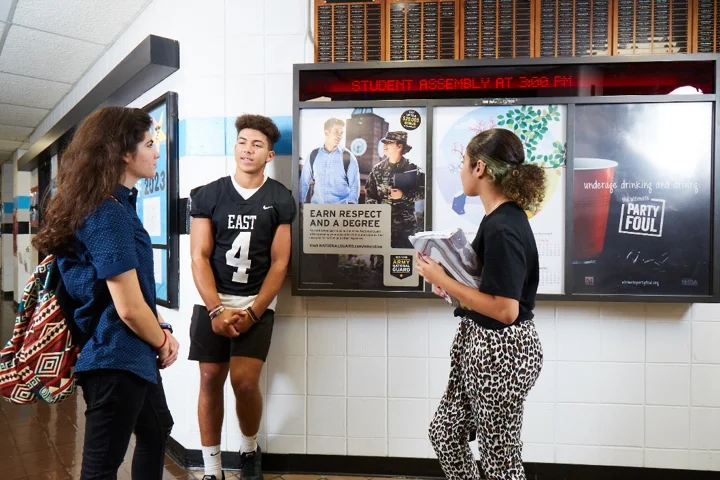
Read next: 6 Examples of Brands That Got Gen Z Marketing Right
1. Understand your target audience
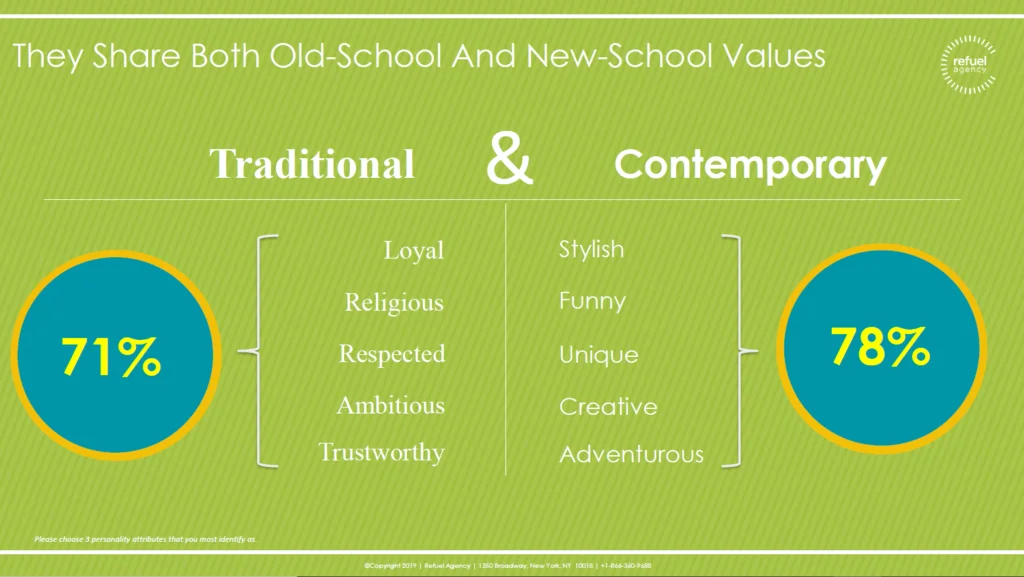
Before you can successfully launch your high school marketing campaigns, you need to understand your target audience at a deep level—who they are, what they care about, what makes them tick, how they engage with media, and what their lifestyles look like.
At Refuel, we believe research is at the very core of our success, and we use proprietary insights from our Gen Z Explorer Series™ to ensure we understand how to market to Gen Z and that our campaigns make an impact.
So who is the Gen Z audience and how can you influence them? Gen Z teens are pragmatic, diverse, and independent. While their Millennial counterparts are much more keen on oversharing, Gen Z manages their social media presence much more like a brand—curated and privacy-oriented. Gen Z are accustomed to being marketed to, so they expect brands to merge seamlessly into their lives, support their values, and to communicate the way that they do.
In particular, Gen Z teens are at the forefront of trends, constantly scouting for new products, online personalities, and technology. Marketing manager Sarah Walter advises, “Take time to research what’s cool and what’s not, and use that knowledge to boost activities. Leverage this information to get ahead of your competition.” CEO Kevin Miller chimes in, saying, “Young people are focused on what’s popular and relevant now and in the present moment, so it’s important to use current references and platforms to properly engage with them.”
Speaking Gen Z’s language is pertinent to your brand’s ability to influence them. To learn more about marketing to Gen Z, check out our ultimate guide.
Read next: The Ultimate Guide to Marketing to Gen Z
2. Be where they are—online and offline
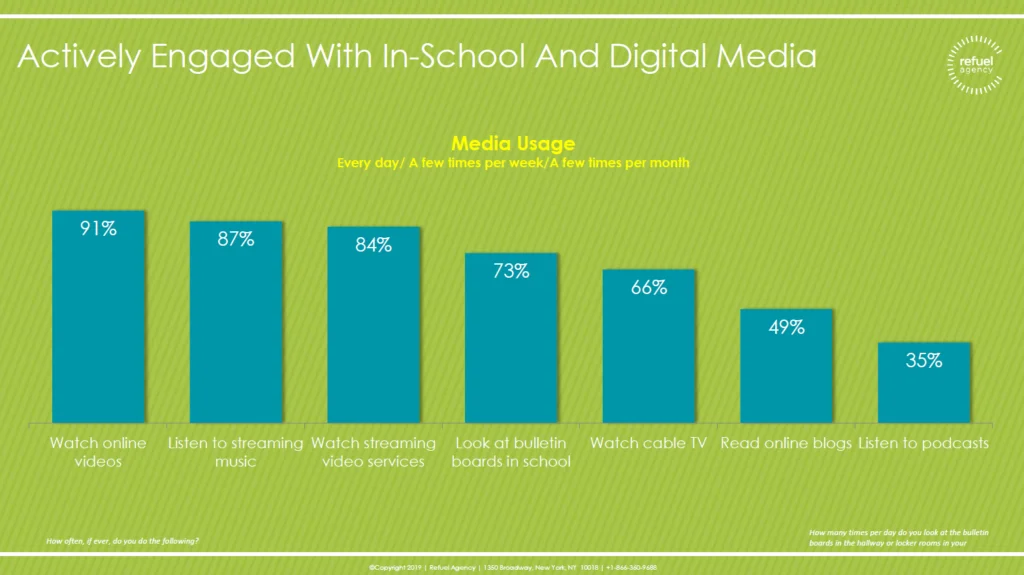
Gen Z teens consume different media than their parents or grandparents, and are influenced in different ways. For your high school marketing campaign to be successful, you need to place their brand where it successfully interrupts their daily lives and has a meaningful impact on them. So where should your brand focus their efforts?
In-school media boards
As schools further return to in-person learning, high school students spend the majority of their time within their school environments, making in-school out-of-home advertising an incredibly effective way of placing your brand’s front-and-center in their daily lives.
Research shows that Gen Z actually finds out-of-home advertising to be “relaxing” in comparison with the digital ads they’re accustomed to. Our network of media boards are placed strategically in high schools nationwide at eye-level in order to garner maximum exposure for your brand.
Social media

As digital natives, high school students today view their social media profiles as an extension of who they are. Their profiles are both curated and authentic, and on average, they spend 3 hours a day engaging with social media.
But all social media platforms are not created the same. Teens care about what’s new, cool, and what they’re friends are using — so as a brand, you should, too. In 2021, the most-used social media platforms by teens are TikTok, Instagram, and Snapchat. TikTok experienced a much more recent surge of popularity, while Snapchat reigns as the long-term favorite communication tool for Gen Z teens.
Additionally, consider channels where you can be a big fish in a smaller pond. Channels like Twitch, HouseParty, Discord, and YouNow have gained popularity and offer opportunities for your brand to authentically connect with this young demographic.
Mobile device targeting
Most teen students carry their phones with them all the time—making mobile targeting one of the easiest and most effective ways to target high school students. At Refuel Agency, we have the ability to target the mobile phones of high school students whenever they’re in the boundaries of their schools.
Video streaming
According to Refuel Agency’s Gen Z Explorer Series™, 91% of Gen Z report watching online videos every day, 84% report that they watch video streaming services, and Gen Z is 64% more likely to stream videos on their smartphones. Gen Z is partial to specifically short-form videos over long form ones. Gen Z spends more time on YouTube than on Netflix or any other streaming platforms, and most of Gen Z’s favorite influencers are from YouTube, Vine, TikTok, Snapchat, and Instagram stories.
So what’s the takeaway? Gen Z loves video content—but not just any video content. They gravitate towards influencers, whose content seems authentic and relatable, like Liza Koshy (18.7M YouTube followers) and Emma Chamberlain (9.1M YouTube followers). Brands can take a page from their books and create video content that makes Gen Z feel more like collaborators than consumers — encouraging user-generated content, filming with lo-fi aesthetics, and being subtle with branding.
Read next: Looking Ahead: 4 Key Youth Marketing Trends for 2021
3. Influence them at their price point
In-school promotions + sampling
High school students, in particular, are motivated by brands that can influence them at their price point. Free samples and targeted discounts are particularly persuasive to a target demographic that has not yet entered the workforce. Additionally, in-school sampling campaigns are effective because students are being targeted in an environment that they trust, their school.
An example of this success lies in our “Redzone” sampling campaign with Old Spice. Through Refuel, Old Spice created a multi-year sampling campaign to increase their brand awareness among high school boys. The campaign successfully deployed across 10,000 high schools nationwide and results in an 81% increase in Old Spice purchases.
4. Speak to their experiences
High school students, more so than older generations, expect for brands to be relatable and to merge seamlessly with their lives. They grew up with the Internet and smartphones, after all, so they’re used to branded content being infused into their daily lives. Given this, your brand has the opportunity to run meaningful campaigns that speak to the experiences of high school students.
Especially as students head back to their schools, brands should address the toll that COVID-19 has taken on them, their families, and their friends. “The best way brands can prepare teens for their return to school is by helping them navigate their new realities through human-centered campaigns,” says digital marketer Baidhurya Mani. “They should focus on empathizing with students by sharing their values and issues that matter to them.”
Don’t forget about marketing to parents of high school students
When you’re strategizing ways to market to high school students, don’t forget two of the most important people in their lives: their parents. Teens living at home still have enormous influence over their parents’ spending decisions, boosting overall teen buying power from $95.7B total teen income to $265.6B total teen spending including parents.
When it comes to marketing to parents of high school students, one key difference is that while high school students are largely focused on the present, parents are concerned more with their childrens’ futures. Parents are concerned about what their children will do with their lives, when, and how. Marketing VP Mitch Harad adds that, “This overarching pain point for parents of high school students has only been magnified during COVID-19. Brands wanting to connect with returning high school students should address the pain point by communicating messages of safety about the future.”
And remember that you want to make a good impression on the parents of your target audience. Advertisements that may promote distorted body image or that may encourage poor choices or behavior from teens will not make a good impression on their parents. Make sure that your ads keep parents in mind.
Are you ready to get started advertising to high school students? At Refuel Agency, we’ve been marketing to teens for over 30 years, and we’re invested in ensuring your campaigns are successful.

